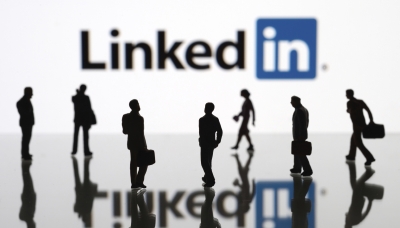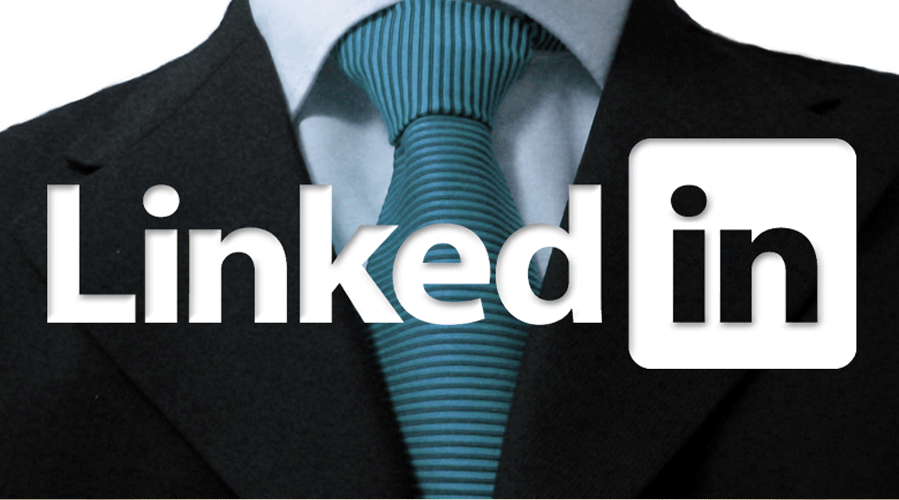
by Fronetics | Dec 20, 2016 | Blog, Leadership, Strategy, Supply Chain, Talent
The 10 most popular talent posts of 2016.
The start of a new year generally brings with it a host of resolutions. For individuals finding and landing a new job, or advancing in their current job are common resolutions. For companies, identifying talent, hiring, and retaining great talent are typical goals for the new year.
We’ve assembled our top 10 talent posts of 2016. We hope these posts help you and/or your company overcome challenges, and your achieve goals.
A veteran recruiter explains where the supply chain talent shortage is headed and how companies can overcome the challenges. Read more.
This guest post by Argentus Supply Chain Recruiting, a boutique recruitment firm specializing in Supply Chain Management and Procurement, asks the question: If there is a Supply Chain talent deficit, why are so many people in the field having trouble finding work? Read more.
The global supply chain is continuously evolving, offering new opportunities as demands shift and new technologies are born. But how do you evolve with it? We offer 5 things you can do to advance your logistics or supply chain career. Read more.
LinkedIn offers immeasurable opportunity for recruiting premium talent. But how do you begin weeding through the network’s more-than-433-million candidates? Here are some techniques — both free and fee-based — on using LinkedIn to find professionals who match your company’s open positions. Read more.
Networking can do more than help you find your next job opportunity; it can make you smarter, happier, and more financially stable. Read more.
Building a stronger relationship between academia and the supply chain industry is one way to solve the growing talent gap. If your company is looking to hire, consider strengthening your rapport with schools that offer supply chain programs or specialties. Read more.
If your job has left you to feeling stuck in a rut, try these steps to improve your professional life. Read more.
Your business is growing, and it is time to hire. That means facing the challenge and overcoming the fact that there is a dearth of supply chain talent. Growth is very common right now, as job titles evolve and shift due to the rapid changes in supply chain management and new technological requirements. So more talent is in demand as many businesses try to remain competitive. Seek out candidates with these skills and experiences when hiring new supply chain talent. Read more.
This guest post by SCM Talent Group, a national supply chain recruiting and executive search firm, discusses a new webinar series centered around the talent aspects of the supply chain discipline. The purpose of this series is to provide low-cost, high-impact solutions and advice that employers, hiring managers, and HR partners can implement in efforts to improve their abilities in attracting, hiring, and retaining top supply chain talent. Read more.
Family businesses can be a source of pride and fulfillment. But, often, they are rife with unprecedented turmoil. Working for a family business presents unique challenges that require special tactics to keep things professional (and to keep the peace). Read more.


by Fronetics | Oct 11, 2016 | Blog, Strategy, Talent
Networking can do more than help you find your next job opportunity; it can make you smarter, happier, and more financially stable.
Kathryn Minshew, founder and CEO of The Muse and The Daily Muse, began a piece for the Harvard Business Blog Network with this sage advice: “Network Your Face Off.” The truth and value of this statement cannot be underestimated.
Here are seven reasons why networking is essential and why connections matter.
1) The larger the network the larger the salary.
A recent study of 6,000 executives in over 3,000 firms found that the more connections an employee has, the greater the salary. Specifically, the study found that a 50% increase in network size accompanies a 3.8% increase in salary with respect to the average.
2) Networks beget jobs.
A survey conducted by The Adler Group found that 46% of active candidates and 49% of passive candidates found employment thanks to networking. Similarly, a study conducted by Banque de France and the University of Toulouse noted that half of all jobs in the United States are filled through personal contacts. ABC News cites an even higher number — according to ABC News, 80% of jobs are landed through networking.
3) Wider networks can lead to better paid jobs.
Research conducted by Federal Reserve Bank of St. Louis economist David Wiczer found that employees who found jobs through individuals within their network got paid, on average, 6% more than employees who found their jobs through direct contact with a firm.
4) Networks provide security.
People who are well-connected are more likely to stay in their jobs longer and have shorter periods of unemployment than people who are not well connected.
5) Networks bring opportunities.
The opportunities networks can bring include: partnerships, invitations to events, introductions, and invitations to give talks and presentations. In short networks bring opportunities that benefit and feed your career, professional development, and personal interests.
6) Networks make you smarter.
Knowing what is happening in your field and industry is vital. When you have a strong network you are more likely to be “in the know” than those who do not have a strong and active network.
7) Networks make you happy.
Minshew writes: “Networks are powerful, and when done right leave you surrounded by a core of individuals who are all rooting for your success and happy to help you.” So true.
Networking is essential. Get out there and build your network.
Related posts:

by Fronetics | Sep 1, 2016 | Blog, Strategy, Talent
Try these four networking tips to stop feeling guilty about developing relationships to advance professional goals.
Does networking make you feel dirty? Research published in Administrative Science Quarterly confirms you are not alone. The authors suggest that acting in self-interest in pursuit of our career goals can affect our sense of morality.
But, as we know, professional connections are essential to advancing your career, pursuing new opportunities, and earning new business. But how can we get past our distaste for networking?
An aversion to networking can be overcome, according to research by Tiziana Casciaro, associate professor at the University of Toronto’s Rotman School of Management; Francesca Gino, professor at Harvard Business School; and Maryam Kouchaki, assistant professor at Kellogg School of Management, Northwestern University. The team identified four strategies for learning to love networking, and published their findings in a recent Harvard Business Review article.
1) Focus on learning
People who approach networking as a necessary evil do it less often and consequently underperform in certain aspects of their jobs. Instead of viewing the next work outing as a chore, shift your mindset to focus on the possible positive outcomes — like gaining knowledge or skills that will help you do your job better.
2) Identify common interests
How do your interests and goals align with the people you meet? People establish the longest-lasting connections when working together on tasks that require contributions from both parties. When you identify mutual interests or objectives with networking contacts, your relationship is more likely to be authentic and to stand the test of time.
3) Think broadly about what you can give
When you don’t have an obvious mutual interest, try offering some kind of value to the relationship. Even junior-level employees, who don’t have company stature or connections to extend, have more networking capital than they may realize. Less tangible things — such as gratitude, recognition, and enhanced reputation — can be highly valuable, the authors suggest.
4) Find a higher purpose
Rather than focusing on the personal benefits, consider the collective value of forming professional connections. Will building relationships help your clients? Will more visibility in professional circles or at industry events enhance your company’s reputation? Framing networking in terms of a larger goal can make the activity more palatable, even helping you to see it as a beneficial opportunity.
Related posts:

by Fronetics | Nov 2, 2015 | Blog, Marketing, Social Media, Strategy

In mid-October, LinkedIn made some big changes: LinkedIn Groups are private and there’s a new, standalone LinkedIn Groups app for iOS users. Many LinkedIn Groups were used for the purpose of networking, research, and prospecting, however many people were misusing, and even abusing, the Group option. Rather than using groups properly, to form relationships, engage with industries that could supplement yours, and keep up with hot topics, the group option was often used for self-promotion.
The Changes
According to LinkedIn, these changes were spurred by consumer feedback. “Our research has shown that professional conversations are most effective in a private trusted space, so conversations in groups won’t be visible until you’ve joined the group. Joining a LinkedIn group now requires either an invitation or approval of your request. Our data has shown that open groups have historically attracted a larger percentage of low-quality conversations. Members-only groups have created significantly more participation and conversations than others (up to five times more), indicating that members feel more confident contributing in these types of groups.”
Some additional, prominent changes:
- Moderation: Conversations will be posted without the need for approval from a moderator, manager, or group owner, however those people can still remove off-topic conversations.
- Standard and Unlisted Groups: In an effort to simplify things for the consumer, groups will be either unlisted, meaning that they don’t show up in search results and only a manager/moderator can invite people members, or standard, meaning that groups do show up in search results and members can invite anyone with a 1st degree connection.
- Content Filtering: Filtering of spam and low-quality content to keep promotional material out of conversations.
- Subgroups: Subgroups will no longer exist to help clear up confusion. Any current subgroups will become their own, standalone groups.
- Mentions in Conversations: Like other forms of social media, the @ symbol will now be used before a name in order to reference someone and bring them into the conversation.
Other changes can be found at LinkedIn’s Help Center page.
Group Etiquette
If you’re already using groups in smart way, you’ll only see improvement from LinkedIn’s changes. Say goodbye to spam and relentless self-promotion. Groups may become more meaningful with a more exclusive approach. The people who are genuinely interested in having specific, topical conversations will. Here are some tips on how to navigate the new Groups:
-
Engage Don’t Enrage:
Keeping in mind that there’s a difference between narcissism and seeking feedback, wait a bit before you post your own blogs, articles, or other branded content. You may want a group of talented, knowledge people to review your writing, but you need to establish yourself as a valued member of the group first. Comment on and like others’ posts. Put in your time and build rapport.
-
Prudence in Posting:
When there’s a discussing going about a topic that speaks to you, you might feel anxious to jump in with a relevant article you’ve written, but consider your timing. Only after posting third-party articles and blogs, to show your support of others and breadth of knowledge, consider posting your own. When you do post your first article, it might be helpful to connect it to the groups’ influence. For example, Based on the recent, rich conversation about the engagement of Boomers and Millennials in the workplace, I gather my recent years of experience with this and wrote an article I though I’d share with you. I appreciate the fruitful conversations here that helped spur this article.
-
Connect Cautiously:
As with all etiquette, the idea isn’t to approach people with fear, but with respect. Sometimes, early on, respect can be established by being cautious in order to better understand individual and community needs and norms. Once you’re in a group, don’t be unknowingly creepy. Engage with people who might have similar interests or who you feel might be attracted to your brand. First comment on their posts, like an article, show that you’re engaged and have something to offer intellectually. Give them your thoughts before your products. Once some sort of engagement is established, then send a connection request.
The new changes to LinkedIn’s Group option is going to serve everyone well, whether you’re in marketing in or any other field. It means more meaningful engagement and less bothersome noise and chatter.
Fronetics Strategic Advisors is a leading management consulting firm. Our firm works with companies to identify and execute strategies for growth and value creation.
Whether it is a wholesale food distributor seeking guidance on how to define and execute corporate strategy; a telematics firm needing high quality content on a consistent basis; a real estate firm looking for a marketing partner; or a supply chain firm in need of interim management, our clients rely on Fronetics to help them navigate through critical junctures, meet their toughest challenges, and take advantage of opportunities. We deliver high-impact results.
We advise and work with companies on their most critical issues and opportunities: strategy, marketing, organization, talent acquisition, performance management, and M&A support.

by Fronetics | Jun 4, 2015 | Blog, Marketing, Social Media, Strategy

When thinking about where to focus your company’s social media presence, look at the numbers. LinkedIn generates 80% of B2B social media leads, more than Facebook, Twitter, and Google+ combined. A 2013 study conducted by Demo and CEO.com shared that “LinkedIn remains the one social media platform that is actually more popular with CEOs than the general public.” Why are company higher-ups turning to LinkedIn, the top professional social media platform?
LinkedIn currently has more than 350 million users, from over 200 countries and territories, and sees 2 new members added each second. A good amount of people, 40%, check LinkedIn daily. With these impressive numbers and LinkedIn’s goal of reaching 3 billion users, a company profile is bound to get traffic, especially if the company is utilizing the publishing format to share ideas and situate itself as a leading voice in the industry.
Your own employees, current and former, most likely have their own LinkedIn profile. They list their education, and of course, their work history. If your company does not have a LinkedIn page, there will be no logo to click on, no link, no exposure for you, and perhaps a loss of credibility. In today’s tech-savvy world, being engaged in social media platforms has come to be the norm for individuals and companies. People spend 1.72 hours on social media a day; let them find you easily during that time.
Leads:
With LinkedIn being the top social media site to generate leads, why not highlight your company there? Unlike Facebook, you have the ability to see who is looking at your company’s profile, and now, with LinkedIn’s newest analytics service, users can see who has been viewing their posts. Users can also see how many people liked and shared a post, and see more detail into demographics such as viewers’ industry, location, and job titles. By understanding who is looking at your company’s page or posts, you can see which demographic you’re reaching, and which you’re missing. You can reach out to those who show repeated interest and try to find ways to tailor future content to attract the people you’re not reaching.
Credibility:
Let your former and current clients and partners advertise your expertise for you. With the “recommendations” and “endorsements” features others can help build your level of trust with potential leads.
Coaches, consultants and recruiters also comb through LinkedIn looking for company matches for their clients. According to Executive Coach and Consultant, Stephenie Girard, “I rely on companies to use LinkedIn to increase their credibility, attract quality talent and expose their product or professional services. When organizations utilize LinkedIn in full capacity we gain access to the company’s values, culture, people and products – all of which are crucial pieces to the puzzle when matching a potential employee to employer.”
Connections:
Finding leads directly might be on your mind, but finding other business people and businesses that you can follow, monitor, learn from, and partner with, can also be incredibly valuable and may, in the end, bring you some leads and great business allies.
Once you have the connections made on LinkedIn, stay in touch with your old and new connections, clients, and customers. Many companies use LinkedIn as another platform to share press releases, white papers, videos, and product announcements.
According to Business Insider article LinkedIn May Not Be the Coolest Social Network, but It’s Only Becoming More Valuable to Businesses, “LinkedIn has the advantage of being the place for white-collar professionals to network, meaning its population is highly desirable since it is a high-income and highly educated user base.” Is LinkedIn right for you? If you’re looking for intelligent professionals, perhaps it is.






